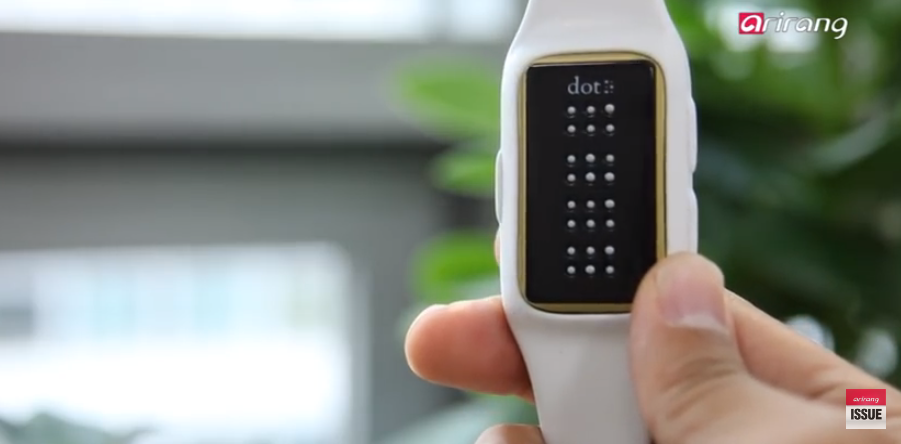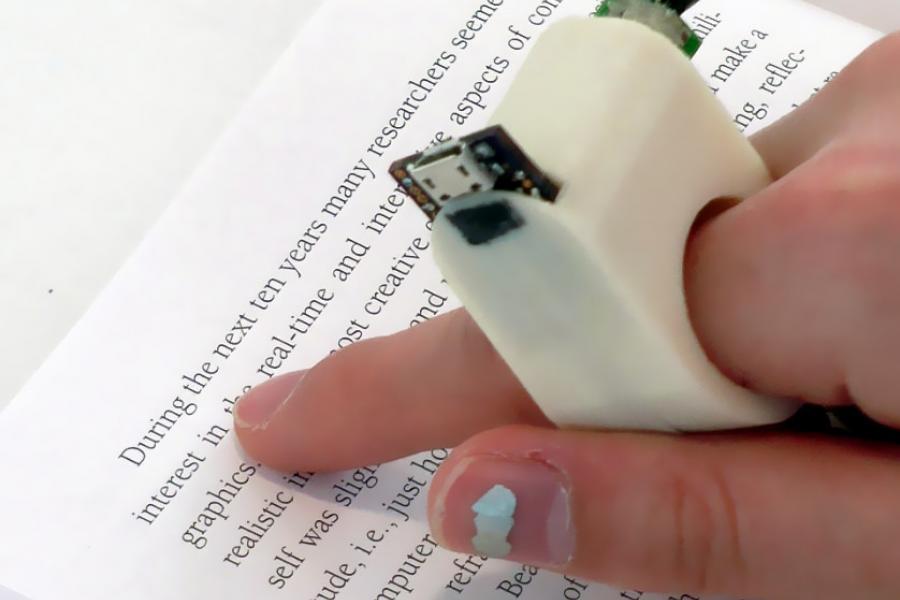Mobility Aids for Visually Impaired Users: Improving Freedom
Mobility Aids for Visually Impaired Users: Improving Freedom
Blog Article
Discover Cutting-edge Devices Made for the Visually Damaged
The development of innovative tools for the aesthetically damaged stands for a considerable advancement in accessibility and independence. Technologies such as clever glasses with AI abilities and mobile applications designed to give auditory summaries are reshaping day-to-day experiences for individuals. Additionally, wearable tools that use haptic comments improve environmental recognition, while contemporary Braille innovations use brand-new ways to involve with text. As these devices remain to evolve, their effect on the lives of those with visual problems raises vital concerns regarding the future of inclusivity and autonomy in different facets of life. What lies ahead in this technological landscape?
Smart Glasses for Navigation
Smart glasses created for navigating are revolutionizing the means visually impaired people engage with their setting. These sophisticated devices make use of a mix of electronic camera modern technology, expert system, and auditory comments to supply real-time information concerning environments. By employing barrier detection systems, smart glasses can inform individuals to possible risks, making it possible for safer flexibility in both unfamiliar and acquainted settings.
The assimilation of GPS technology better enhances navigation capacities, enabling customers to get acoustic directions as they relocate. This hands-free strategy not just fosters independence but likewise empowers visually damaged individuals to navigate urban landscapes with boosted self-confidence. In addition, many clever glasses are furnished with features that recognize sites and street indications, giving contextual info that boosts the user experience.
Additionally, the growth of these devices is continuously advancing, with firms working to improve the accuracy of item recognition and broaden the variety of navigational functions. As wise glasses come to be extra cost effective and accessible, they hold the potential to considerably transform day-to-day live for aesthetically damaged users. Eventually, these cutting-edge tools stand for a vital action towards inclusivity, offering boosted wheelchair and a better feeling of freedom for people navigating the world around them.

Mobile Apps for Daily Living
Just how can mobile applications boost the everyday lives of aesthetically damaged individuals? Mobile apps are changing the way visually damaged customers navigate their environments, handle day-to-day jobs, and access info. These applications give essential support with various capabilities, fostering freedom and boosting quality of life.
Numerous innovative mobile apps are made especially for daily living. Apps like Be My Eyes connect aesthetically damaged customers with sighted volunteers via video clip calls, allowing them to get real-time help with tasks such as reviewing labels or navigating unknown spaces. Likewise, Seeing AI, developed by Microsoft, makes use of expert system to define environments, checked out text, and determine objects, effectively transforming a smart device right into a powerful tool for day-to-day aid.
In addition, navigation applications customized for the visually damaged, such as Aira and BlindSquare, use audio-based directions and environmental info, allowing users to traverse their environments safely and confidently. Past navigating and instant support, mobile apps additionally sustain organization and task management, with attributes that help customers establish tips, create to-do checklists, and track consultations. In summary, mobile applications offer as indispensable sources, empowering aesthetically impaired people to lead more independent and meeting lives.
Wearable Technologies for Support
Empowerment via modern technology is significantly apparent in the realm of wearable tools developed to assist aesthetically impaired people. These cutting-edge devices integrate seamlessly right into life, boosting navigation and providing crucial responses to users. For example, smart glasses furnished with electronic cameras can identify faces and check out message aloud, permitting individuals to communicate even more confidently in social and expert setups.
Another noteworthy innovation is the usage of haptic feedback systems in wearable devices. These systems utilize vibrations or other tactile signals to convey information regarding the individual's atmosphere, such as challenges or modifications in terrain, enhancing flexibility and safety and security. Wearable technologies also include wristbands that link to smart devices, signaling customers to alerts via refined resonances, hence boosting connectivity without reliance on aesthetic cues.
As these technologies continue to develop, they are not only improving independence for aesthetically damaged people yet likewise promoting a higher sense of inclusion in culture. By linking the void in between difficulties dealt with in everyday living and the potential for freedom, wearable modern technologies act as critical tools in the quest for equal rights and empowerment for those with visual impairments.
Sound Summary Tools
Sound summary tools play have a peek here a vital duty in improving ease of access for aesthetically damaged individuals, giving them with the capacity to engage with visual media. AI-powered visual aids. These tools supply narrated descriptions of essential aesthetic aspects in movies, television programs, and live performances, making certain that individuals can fully understand the context and feelings communicated with visuals
Sound summary can be integrated right into numerous platforms, including streaming services, movie theater testings, and live cinema. Many prominent streaming solutions now consist of audio description as an accessibility function, permitting audiences to pick it easily. Along with conventional see this media, specialized apps likewise exist, giving audio descriptions for art exhibitions, galleries, and various other cultural events.
The efficiency of audio summary rests on the skill of the storytellers, that must convey aesthetic information succinctly without interfering with the original audio. Technologies in this field are likewise leading the means for even more individualized experiences, where customers can adjust the level of detail and pacing according to their choices.
Braille Innovations and Tools
Braille technologies and gadgets have dramatically changed the way visually damaged individuals engage with message and information. Modern improvements have brought about the development of flexible devices that enhance proficiency and self-reliance among individuals. Especially, Braille show modern technologies have progressed, permitting vibrant reading experiences. These tools convert electronic message into Braille, allowing users to access a huge array of info on smart devices, computers, and tablet computers.
In addition, mobile Braille notetakers incorporate traditional Braille input with modern functionalities, helping with note-taking, scheduling, and file modifying on the go. Smart glasses for the visually impaired. These compact gadgets commonly include text-to-speech capabilities, linking the gap between Braille and acoustic details
On top of that, cutting-edge Braille printers have actually arised, permitting customers to create Braille labels, files, and academic materials efficiently. This availability promotes higher involvement in professional and academic atmospheres, ultimately advertising inclusivity.
Furthermore, research into wise Braille modern technologies continues to broaden. Instruments that integrate expert system are being discovered to give real-time navigating assistance and contextual details, improving the user experience in varied setups. Generally, these advancements mirror a commitment to empowering aesthetically find here damaged individuals through modern technology, guaranteeing they can quickly access and involve with the globe around them.

Conclusion
The improvement of innovative devices for the visually damaged considerably boosts independence and top quality of life. These innovations not only foster higher incorporation however additionally promote autonomy in everyday tasks, eventually adding to a more obtainable and equitable society for aesthetically damaged individuals.
As wise glasses come to be more budget-friendly and accessible, they hold the prospective to substantially change daily life for visually damaged customers. Mobile apps are transforming the method aesthetically damaged users navigate their atmospheres, take care of daily tasks, and gain access to details. Applications like Be My Eyes connect visually impaired individuals with sighted volunteers by means of video clip telephone calls, allowing them to receive real-time support with tasks such as checking out tags or browsing strange rooms.Additionally, navigation applications customized for the aesthetically impaired, such as Aira and BlindSquare, provide audio-based instructions and ecological information, enabling individuals to traverse their environments securely and with confidence.The development of ingenious devices for the aesthetically damaged substantially enhances independence and quality of life.
Report this page